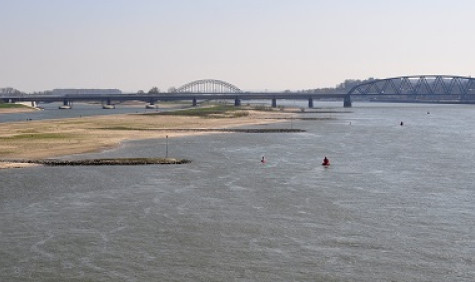"Because you often have to work with locally available soil when building dykes, that is a very important factor when calculating the probability of such a dyke failing."
How safe are our dikes?
Dikes are of vital importance to the Netherlands. But how do you know for sure whether a dike can withstand the increasing (climate) challenges? In his thesis, Yajun Li of Delft University of Technology introduces a 3D analysis model that can assess this reliability much more accurately. The geoscientist tested his model on our Grid facilities.
Flooding
In the Delta Programme, governments and other organisations work together to protect the Netherlands from flooding and ensure sufficient fresh water. With the Delta Programme 2017, the Netherlands introduced a series of new standards last year. As in the previous six Delta Programmes, the focus is on preventing floods as much as possible through solid dykes and sand reclamation along the coast. The new version is also based on a 'flood risk approach'. This means: looking not only at the probability of flooding, but also at its consequences.
Fracture sensitivity
That approach requires a quantitative assessment of flood risks, including the possibility of dykes failing. To make such an estimate, Chinese-born geoscientist Yajun Li conducted PhD research at TU Delft on the composition and fracture susceptibility of Dutch dykes. The research, which took place under the supervision of professor Michael Hicks and associate professor Phil Vardon, led to a new risk analysis framework that uses, among other things, a 3D analysis model.
Smaller safety margin
"With his PhD research, Li is building on research by colleague Michael Hicks," Vardon explains. "His hobbyhorse is the heterogeneity of materials, such as the soil used to make dykes, and its effect on the calculation of the reliability of those structures. Because you often have to work with locally available soil when constructing dykes, this is a very important factor when calculating the probability of such a dyke failing. The more accurately you can calculate that probability, the smaller the necessary safety margin when building a dike. And of course, predicting risks for existing dykes also becomes much more accurate."
Weakest link
For his PhD research, Li focused on the numerous samples 'drilled' out of Dutch dykes every year. To do this, Li used a 3D random finite element method (RFEM). "In the common 2D method, you assess the reliability of the entire dike on that of the weakest cross-section," says Vardon. "That sounds logical, but in doing so you don't take into account the fact that this 'weakest link' of a dike rests on stronger dike sections. Our research shows, among other things, that this support increases the strength of that weakest link. With the 3D model, we can therefore predict the probability of a dike breach much more accurately, and therefore build and maintain dikes more efficiently."
Additional computing power
However, calculation in a 3D environment does yield a much larger number of possible combinations. Vardon therefore appealed to SURF for additional computing capacity. "That request went smoothly," he says. "A day after our e-mail, we already received word from Grid & Cloud services consultant Natalie Danezi, who guided us through the whole process. As there were many separate computing jobs, using the Grid, which consists of a large number of interconnected computer clusters, was an obvious choice. This infrastructure does not yet excel in ease of use, partly because the computer clusters are spread all over the world. But thanks to Danezi's help, we had nothing to worry about."
"For example, one student is working on reliably measuring the variability of soil composition and another is working on models that can give us more insight into how very rare worst-case scenarios play out."
Worst-case scenarios
To make it easy for engineers to benefit from the new insights, Li also instituted a number of less complex models, which can produce roughly the same insights with considerably fewer calculations. Vardon and Hicks are now supervising several other (PhD) studies that build on this matter. "For example, one student is working on reliably measuring the variability of soil composition," Vardon says, "and another is working on models that can give us more insight into how very rare worst-case scenarios play out. Early insights show, among other things, that these scenarios have less violent outcomes than previously thought."
2.5 million hours
"Furthermore, we are looking at the influence of the shape of the dike, and the possibilities of using data generated by sensors in the dike in the assessment. In doing so, we are taking a run-up to a future in which the reliability of dykes can potentially be monitored by sensors in real time. We are of course happy to use the Grid again for these studies." In total, the research team led by Vardon has already used 2.5 million core hours on the Grid since the collaboration with SURF began in 2013. In comparison, a single computer core would therefore take 2.5 million hours to do this.

